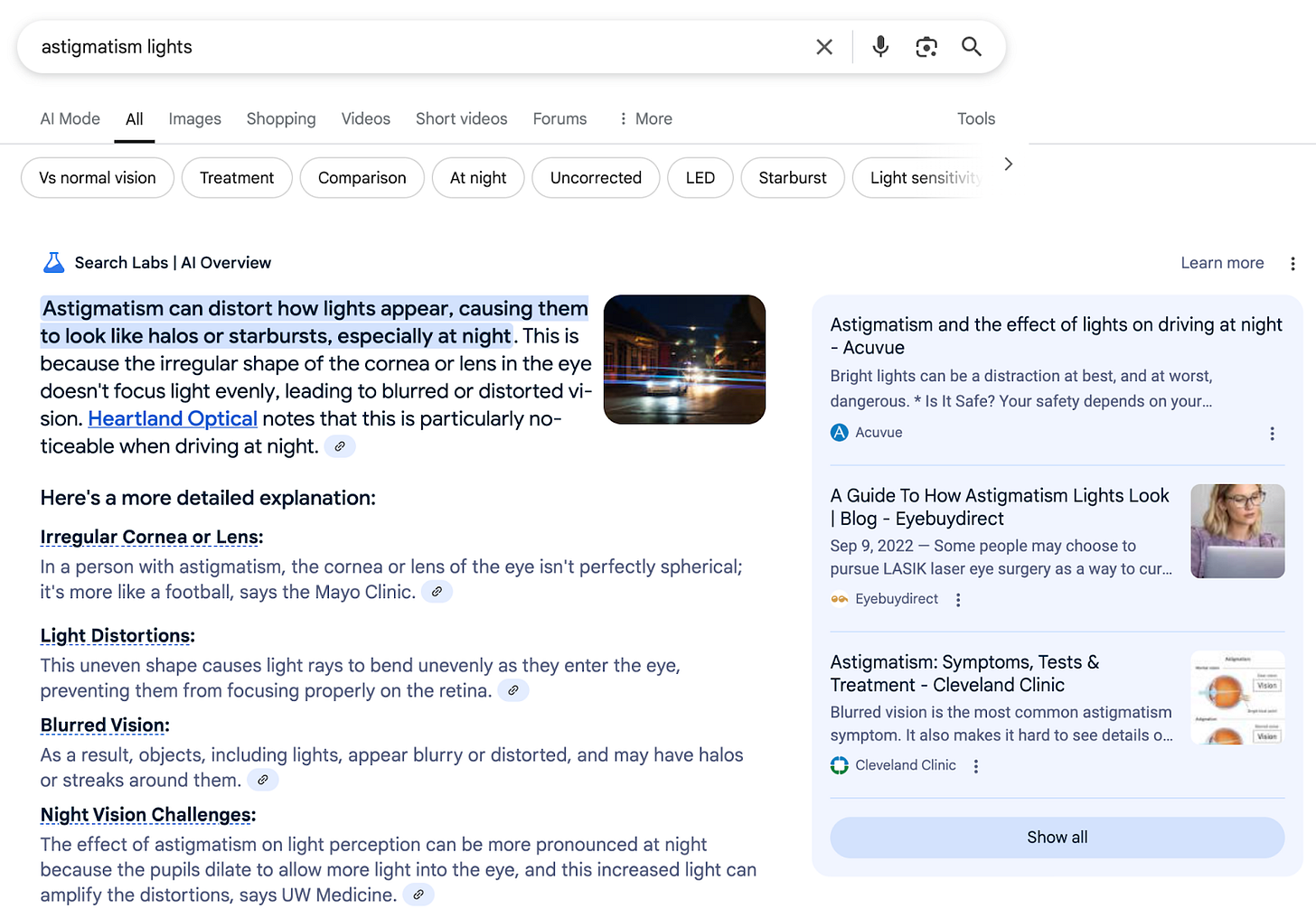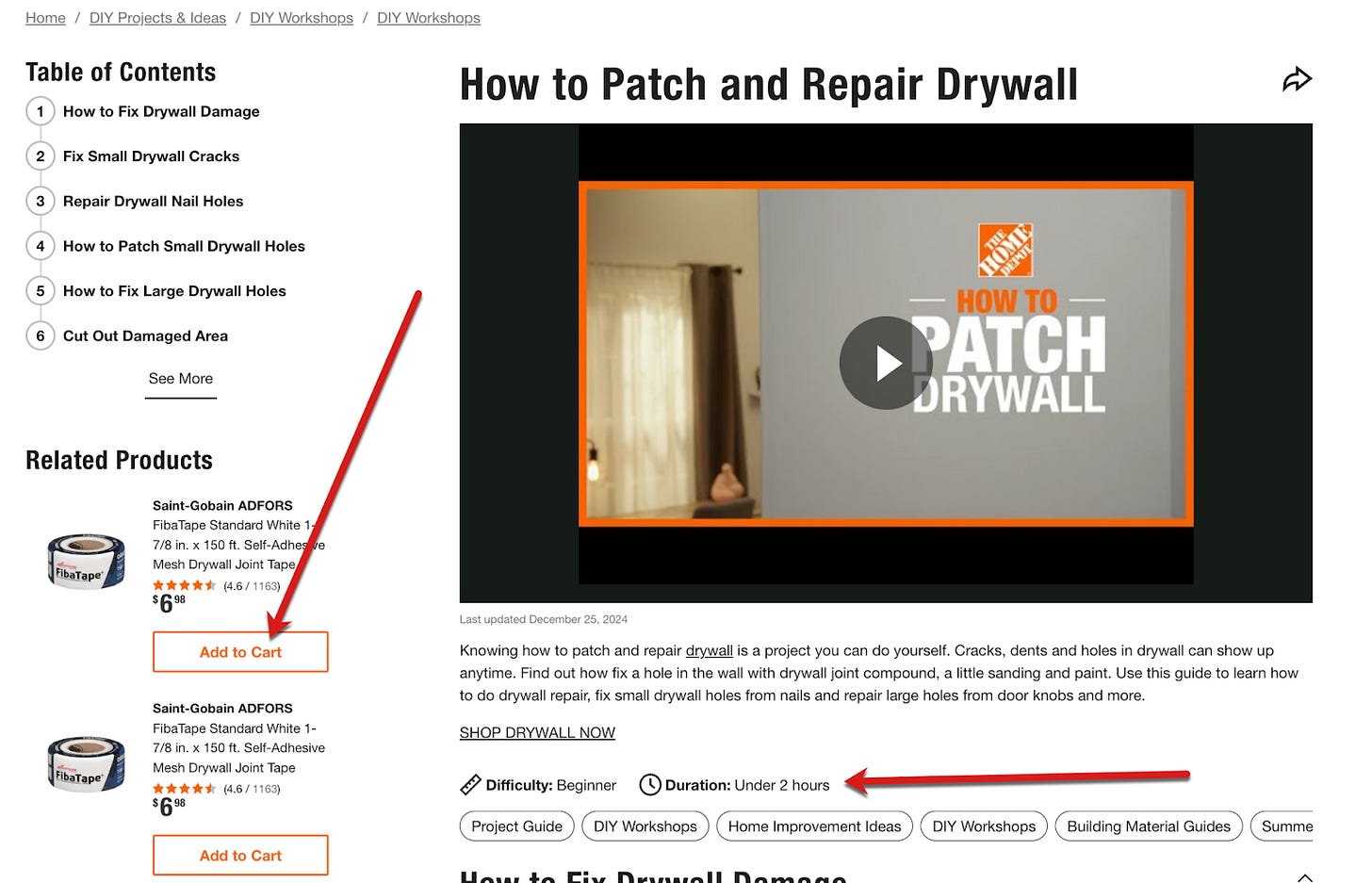Create Content That REQUIRES a Click: Traffic Driving Solutions Post Google AI Overviews
Prioritize content that is impossible to summarize by AI
Everyone is losing traffic now that Google’s search has become so efficient at giving satisfying answers. This is happening due to the introduction of so-called AI Overviews, i.e., an AI-driven feature that summarizes search results to give quick answers to a search user.
👉🏻 Join us on Linkedin, Youtube or Facebook to discuss this topic LIVE!
Here’s an example of an AI Overview that gives a very detailed and satisfying answer on how lights affect people with astigmatism:
As one curious about this problem, I honestly clicked no links in this AI Overview because I learned all I needed.
Google wouldn’t disclose the click-through rate from AI Overviews, but as 100% of websites lost organic search traffic with the introduction of the feature, it is safe to assume not many people click them.
So, what to do?
The answer is to publish content and assets that cannot be easily summarized:
1. Focus on “DO” queries
Google’s quality guidelines offer a bit different types which, I think, are more useful for optimization purposes with the growing popularity of AI-driven search and AI-powered search elements (like AI Overviews):
“Know simple”
“Know”
“Do”
“Do” queries imply some sort of an action. It can be an action to buy something (e.g. “magnesium online”) or an action to do something (for example, if someone is searching for “online personality test”, they are most likely to be interested in taking one).
Google also mentions that some “Do queries” may be “open-ended”, i.e. many types of content can be helpful for these queries. For example, for “small bathroom organization ideas” query, some users may want to browse images and videos, some may want to read how-to guides, and others may be interested in both.
For many “Do” queries, it is impossible to give a satisfying answer by just summarizing search results, so searchers will likely click off search results to perform an action or follow the instructions.
This is why these queries present a solid SEO potential, and these are the type of search intent you should prioritize from now on.
“Do” queries may be of commercial or informational intent but both are important for SEO. Informational-intent “Do” queries can help you put your products in context. This problem-solving content can drive sales and help AI understand your products better.
For example, Home Depot produces a lot of problem-solving content that lists their products (and links directly to product pages) as part of the solution:
The tutorial also provides some helpful elements like video instructions and duration, and allows you to add required products to cart right from that page.
This is a very good strategy that can still generate organic search traffic that drives conversions.
2. Become the source of original and interesting research
Surveys and studies help your brand become a cited source. If done right, they help you generate links, shares, brand mentions, and clicks - all of these are important ranking signals.
In the AI Overview era, they also help you generate more organic search traffic because people usually click to find more details about the data.
If you visualize your study, you can also generate additional traffic from Google Image search, as Google often blends organic search with image packs. That’s why we usually turn our link magnets into infographics for our clients.
3. Create tools
Helpful tools that solve some problems are going to continue to drive traffic because users cannot perform an action unless they land on your site. Those can be simple generators and calculators. At Smarty.Marketing, we have a few schema generators that we refer our clients to for optimization purposes.
Generally, anything that requires people to go to your site to do anything is a good idea. Contact us if you want us to brainstorm additional ideas, find traffic-driving opportunities and help you build traffic.



